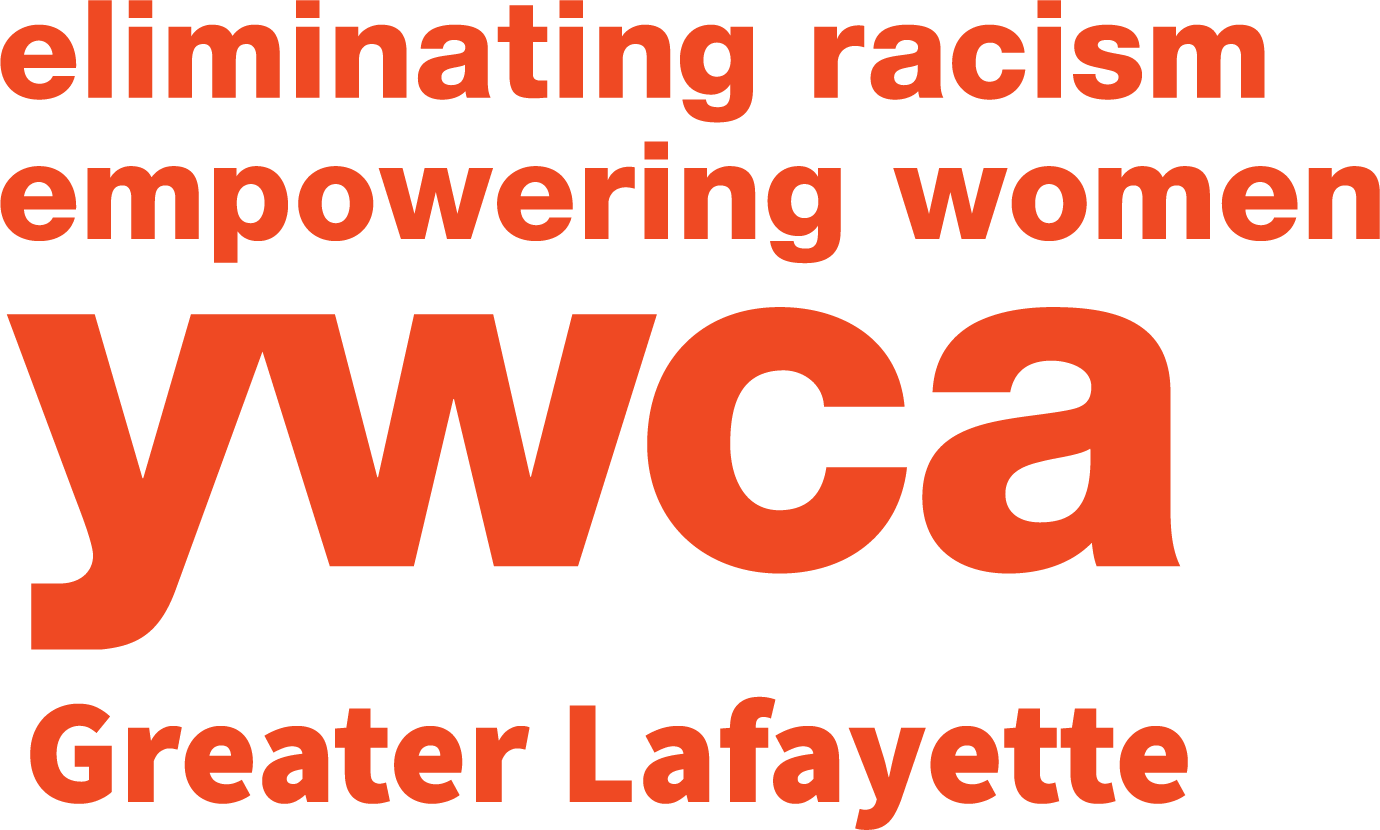Safety Planning: A Survivor's Guide
Your internet use can be accessed and monitored after you leave a web page. To quickly exit this site, please use the QUICK ESCAPE button at the top right hand side of this page.
Domestic Violence & Safety Planning
In the United States, 1 in 4 women and 1 in 7 men will experience domestic violence during their lifetime. Domestic violence is a pattern of abusive behavior in any relationship that is used by one partner to gain or maintain power and control over another intimate partner. Domestic violence can be physical, sexual, emotional, economic, or psychological actions or threats of actions that influence another person. This includes any behaviors that intimidate, manipulate, humiliate, isolate, frighten, terrorize, coerce, threaten, blame, hurt, injure, or wound someone. Click here to view the "Power and Control Wheel," which shows all of the ways an abuser might exert power and control over their victim. YWCA Greater Lafayette recognizes domestic violence comes in all forms and we understand that each survivor will need individualized care and support. On average, it takes 7 attempts to leave before a survivor of domestic violence is ready and able to permanently leave an abusive partner. We believe that survivors know their situation and the circumstances of their relationship better than anyone else and we understand that it isn’t always the safest option to leave. We will never tell you that it's time to get out. We will never force you to do anything that doesn't feel right for you. YWCA Greater Lafayette is on a mission to put the power and control back in the hands of survivors. We want to support all survivors; those who aren't ready to leave, those who are, and those who have gotten out. We want you to know that you are not alone and we will be here for you when you need us. Safety Planning is a personalized, practical plan that includes ways to remain safe while in a relationship, planning to leave, and after you have left. Safety planning will provide you with ways to cope with your emotions, how to tell friends and family about the abuse, steps for taking legal action and more. In this blog post, we will go over the ways to develop a safety plan that works for you, the things that will help most once you are out of the relationship, and the ways to execute your plan when you are ready.
On average, it takes 7 attempts to leave before a survivor of domestic violence is ready and able to permanently leave an abusive partner. We believe that survivors know their situation and the circumstances of their relationship better than anyone else and we understand that it isn’t always the safest option to leave. We will never tell you that it's time to get out. We will never force you to do anything that doesn't feel right for you. YWCA Greater Lafayette is on a mission to put the power and control back in the hands of survivors. We want to support all survivors; those who aren't ready to leave, those who are, and those who have gotten out. We want you to know that you are not alone and we will be here for you when you need us. Safety Planning is a personalized, practical plan that includes ways to remain safe while in a relationship, planning to leave, and after you have left. Safety planning will provide you with ways to cope with your emotions, how to tell friends and family about the abuse, steps for taking legal action and more. In this blog post, we will go over the ways to develop a safety plan that works for you, the things that will help most once you are out of the relationship, and the ways to execute your plan when you are ready.
SAFETY PLANNING WHILE LIVING WITH YOUR ABUSER
Your safety plan can have as much or as little information on it as you see necessary. Again, as a survivor, you know your situation best. You will want to think about the things you can access easily as well as the items that might take more time to get.
- Print or make a copy of this Safety Plan Checklist so you can keep track of the items you have collected or still need to gather and have a plan to reference.
- Find a backpack or duffel bag that you can easily place your items in and can be grabbed quickly. Find a good hiding place for this bag once it is packed or a trusted friend, family member, or neighbor who will store it for you.
- Determine what items are essential to you. Once you have left the home, we can help arrange a police escort to help collect your remaining items. Take only what you will absolutely need.
- Wait for a time when you feel there is the least amount of risk to your safety before you leave.
- What is your partner’s use and level of force? Assess the level of danger to you and your children before decided to leave.
- Identify safe areas of the house where there are no weapons and there are ways to escape such as a back bedroom with a window and a door that locks. Try to move to those areas when arguments escalate.
- If violence is unavoidable, make yourself a small target. Dive into a corner and curl up into a ball with your face protected and arms around each side of your head, fingers entwined.
- Reach out to YWCA Greater Lafayette and request a 9-1-1 emergency phone to keep hidden in case you do not have access to your own phone. These phones are programmed with local police departments so individuals can have a direct line to first responders. 9-1-1 Phones should be kept hidden, charged, and accessible so when violence escalates, you have access to help.
- If possible, have a phone accessible at all times and know what numbers to call for help. Know where the nearest public phone is located. Know the phone number to your local shelter: 765-423-1118 or toll-free 888-345-1118. If you feel your life is in danger, call 9-1-1.
- Let trusted friends, family members, and neighbors know about your situation and develop a plan and visual signal for when you need help.

- Teach your children how to get help. Instruct them not to get involved in the violence between you and your partner. Plan a code word or phrase to signal to them that they should get help or leave the house. Your children are more aware of your situation than you might realize - help them feel more prepared should things escalate.
- Practice how to get out safely. Practice with your children when your partner isn’t home. Find a window that opens easily and doesn't have a screen. Figure out the quickest route to a safe place.
- Explain to your children the importance of keeping the plan a secret, but prepare for what you will do if they tell your partner about the plan. Remind your children of the code word and teach them how to run to get help or use your 9-1-1 cell phone.
- Keep weapons like guns and knives hidden, locked away, and as inaccessible as possible. If you feel the need to keep a weapon for your own protection, find a safe and hidden place for it.
- If you have a car, make a habit of backing the car into the driveway and keeping it fueled. Keep the driver’s door unlocked and others locked and teach your children how to get into the car through the driver’s door and into the back seat.
- Avoid wearing scarves or long jewelry that could be used to strangle you and try to dispose of similar items when possible, including long cables and ropes.
- Create several plausible reasons for leaving the house at different times of the day or night and use these reasons as practice runs.
- Scroll down to the bottom of this page or reach out to YWCA Greater Lafayette for a list of agencies and organizations in your area that can help you with housing, education, transportation and relocation, protective orders, counseling services and mental healthcare, and employment.
SAFETY PLANNING AS A PARENT OR GUARDIAN
 YWCA Greater Lafayette wants you to know that you are not alone and we are here to help you and your children when you are ready. Our advocates will assist in connecting you with all of the resources essential for your child’s healing including child care service, support groups, mental healthcare, and more. Our other goal is to provide you with some tips on how to talk with your children about domestic violence, how to stay safe when violence escalates, and ways you can empower your children to seek help when it is needed.
YWCA Greater Lafayette wants you to know that you are not alone and we are here to help you and your children when you are ready. Our advocates will assist in connecting you with all of the resources essential for your child’s healing including child care service, support groups, mental healthcare, and more. Our other goal is to provide you with some tips on how to talk with your children about domestic violence, how to stay safe when violence escalates, and ways you can empower your children to seek help when it is needed.
- Teach your children how to call 9-1-1 and give them examples of when to call specific to your situation
- Teach your children a code word that you can use when you need your children to call 9-1-1 or run for help. Code words should be easy to remember and practiced frequently. Teach your children that these code words are a secret and they should not tell anyone about them.
- Practice what you want your children to say once they call 9-1-1 or get help. “My mommy/daddy is being hurt and they need help right now.”
- If your children are old enough, teach them their address and help them memorize it.
- Instruct them and teach them how to leave the house as soon as things begin to escalate. Find safe neighbors for them to go to for help and let these neighbors know they are your family’s “safe neighbors.” You do not need to tell them why.
- Teach your children to never intervene and remind them that the most important thing they can do is get out of the home, call 9-1-1, or find a safe room to hide in when things escalate.
 Let your child know that the violence happening in their home isn’t their fault and there is nothing they can ever do to prevent or cause it. Wrap the conversation in love and remind them that there is nothing that you wouldn’t do for them and that you want them to be prepared in case of an emergency. It’s important to remember that when you’re safety planning with a child, they might tell this information to the abusive partner, which could make the situation more dangerous (ex. “Mom said to do this if you get angry.”) When talking about these plans with your child, use phrases such as “We’re practicing what to do in an emergency,” instead of “We’re planning what you can do when dad/mom becomes violent.”
Let your child know that the violence happening in their home isn’t their fault and there is nothing they can ever do to prevent or cause it. Wrap the conversation in love and remind them that there is nothing that you wouldn’t do for them and that you want them to be prepared in case of an emergency. It’s important to remember that when you’re safety planning with a child, they might tell this information to the abusive partner, which could make the situation more dangerous (ex. “Mom said to do this if you get angry.”) When talking about these plans with your child, use phrases such as “We’re practicing what to do in an emergency,” instead of “We’re planning what you can do when dad/mom becomes violent.”
SAFETY PLANNING FOR PETS
Pets are part of the family and YWCA Greater Lafayette understands that leaving an abusive relationship might not be an option if you have to leave your pets behind. Here are some tips for getting your pets out safely.
- Try to get veterinarian bills and documents with your name on them and place them in a safe place where you can get to them easily.
- Talk with friends, family members, or the veterinarian and try to arrange for your pet to stay with one of them until you can leave the relationship. You can say the pet got loose or that it needed extended care.
- Call YWCA Greater Lafayette and ask about the Pet Safe program or bringing your pet to shelter.
- Reach out to local humane societies and animal welfare organizations to see what services might be available in the area.
- If you are unable to leave with your pet, contact the police department or animal control and let them know what the situation is. If you would like a member of YWCA Greater Lafayette staff to advocate on your behalf, call 765-423-1118 or toll-free 888-345-1118.
SAFETY PLANNING WHILE PREGNANT
 Domestic violence is detrimental to the health of a pregnant woman and her unborn child. Here are some added safety tips for survivors who are experiencing pregnancy. According to the CDC, intimate partner violence affects as many as 324,000 pregnant women each year. Pregnancy can be an especially dangerous time for women in abusive relationships, and abuse can often begin or escalate during the pregnancy.
Domestic violence is detrimental to the health of a pregnant woman and her unborn child. Here are some added safety tips for survivors who are experiencing pregnancy. According to the CDC, intimate partner violence affects as many as 324,000 pregnant women each year. Pregnancy can be an especially dangerous time for women in abusive relationships, and abuse can often begin or escalate during the pregnancy.
- Communicate with your obstetrician about the domestic violence in your home, if possible.
- Slipping a note to the receptionist or nurse letting them know that you need an excuse to meet with them alone might give you an opportunity to get away from your partner.
- If you live in a two-story home, avoid being upstairs, on the stairs, or near the top of the stairs as much as possible.
- See if you can find a women’s only prenatal class in your area. These environments are incredibly supportive and should give you an opportunity to speak with someone privately about your situation and risk of harm.
SAFETY PLANNING AFTER YOU LEAVE
We understand that leaving an abusive situation doesn't guarantee immediate safety. In fact, the moment when a survivor of domestic violence decides to leave, successfully exits the home, and the days and weeks immediately after are often the most dangerous. YWCA Greater Lafayette wants to help you every step of the way. With case management, legal advocacy, support groups, therapy, and more - we are here for you. Here are some tips on how to ensure your safety once you are away from your abuser.
- Get legal advice and seek a protective order if necessary. If you get a protective order, carry it with you at all times. Keep in mind that while a protective order may serve to discourage abuse and result in a legal consequence for the abuser if it is violated, it does not offer any physical protection from violence. YWCA's Legal Advocate and Hispanic Advocate can assist in filing protective orders and navigating legal processes. Learn more here.
- Norah Ashcraft, Legal Advocate
- 765-807-1208
- Nohemi Lugo, Hispanic & Legal Advocate
- 765-423-7015
- Norah Ashcraft, Legal Advocate
- If you remain in the same residence make sure to change locks and security codes, install additional outside lighting, etc.
- Continue to review your safety plan and practice it with your children.
- Change your phone number if necessary. Do not answer any phone calls from any private or unknown phone numbers (save any texts or voicemails from the abuser but do not reply).
- Talk to landlords and neighbors, and ask them to call the police if they see the abuser at your home or if they suspect you are in danger.
- Provide your children’s schools or daycare providers with any restraining order information.
- Avoid spots where you might run in to the abuser.
- Use a post office box for mail instead of a physical mailing address.
- Reschedule any appointments that the offender is aware of.
- Change routes to get to work and the children’s school and alter daily routines to make it more difficult for your abuser to stalk you.
- Seek out support. Finding people who will support you in your healing journey is important and will reduce the likelihood of returning to your abuser. YWCA Greater Lafayette offers a number of adults' and children's support groups where survivors of trauma come together in a safe space to share their experiences and work toward healing. To learn more, click here.
YWCA Greater Lafayette's Domestic Violence Intervention & Prevention Program
YWCA Greater Lafayette is on a mission to support survivors of domestic violence with housing resources, referrals, emergency shelter, support groups, advocacy, therapy, and more. When you are ready, we will be here to help you. We believe that all people deserve to live a life free from violence. For more information, please call 765-423-1118 or toll-free 888-345-1118. Trained advocates are available 24 hours a day, 7 days a week.
